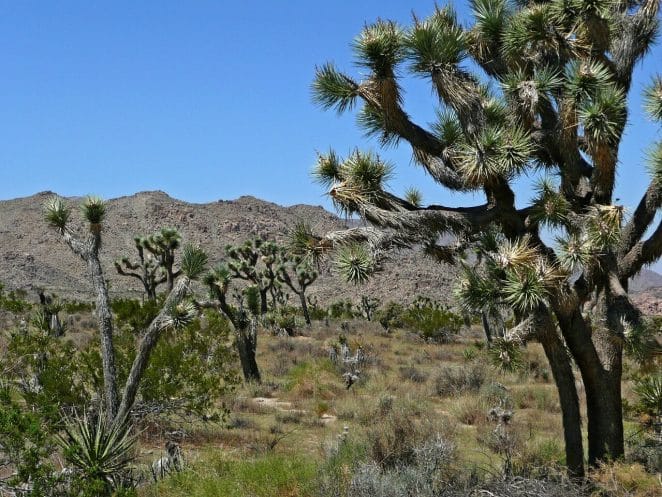Joshua Tree of the Mojave Desert: A Desert Tree in the South Western Of United States
The Joshua tree grows in the high elevations of the Mojave desert and is often a lone symbol in an otherwise seemingly barren landscape; it is said that this tree was named by early Mormon settlers because its shape resembled the prophet Joshua. The Mojave desert is located in the south-west of the United States, predominately in the state of California. However, the Mojave desert also crosses the Californian state border into Nevada, Utah and Arizona; the boundaries of the Mojave desert are often defined by the presence of these trees which is indigenous to the area.
Botanical Classification of the Joshua Tree:
The tree has botanically been classed as part of both the Liliaceae plant family and the Agavaceae plant family; it was originally classed as part of the Liliaceae plant family because of characteristics which identify more with the Liliaceae plant family than that of a tree plant family. However, it is now believed to be part of the Agavaceae plant family, although there are still botanical classifications of this tree in both the Liliaceae and Agavaceae plant families in literacy references.

Where to Find the Joshua Tree?
The tree is found growing in the Mojave desert between 2,000 and 6,000 feet; it can grow to a height of 32 feet and has a wide trunk girth (sometimes up to 12 feet). Although a lone symbol of the Mojave desert, It does grow in groves, in the dry soil, on sloping hill sides or mesas. A unique feature of these trees is that it does not have growth rings like other trees. There are various sub species of it. Yucca brevifolia are found in the southern and western Mojave desert, including Joshua Tree National Park and Saddleback Butte State Park; Yucca brevifolia jaegeriana grow in the eastern Mojave desert, including Mojave National Preserve and close to Dolan Springs in Arizona. Yucca brevifolia jaegeriana are smaller than Yucca brevifolia.
How the Joshua Tree Reproduces?
They produces bell-shaped, white flowers in the Spring and a fruit which contains the seeds; it survival and reproduction relies on pollination of the flowers by the female yucca moth, Pronuba. The seeds of the Joshua tree provide nourishment for the larvae of the Pronuba moth and both tree and moth species are reliant on the other for survival.The Pronuba moth ensures dispersion of the seeds of pollinated flowers to establish new Joshua tree groves.
Native Indian Use of the Joshua Tree :
Native Indians who lived in the Mojave desert used many plants for both survival and food, including the Joshua tree; native Indians used the roots of the Joshua tree for basket work and for dyes, the branches to make quail (a bird species of the Mojave desert) traps and the fiber for nets and sandals.
The Symbol of the Desert – the Joshua Tree is now an iconic symbol of the desert south-west; this strange-looking tree has many unique features, making botanical classification of it complex. It was a resource for the survival of native Indians living in the desert and today it continued survival itself depends on a unique moth species.


